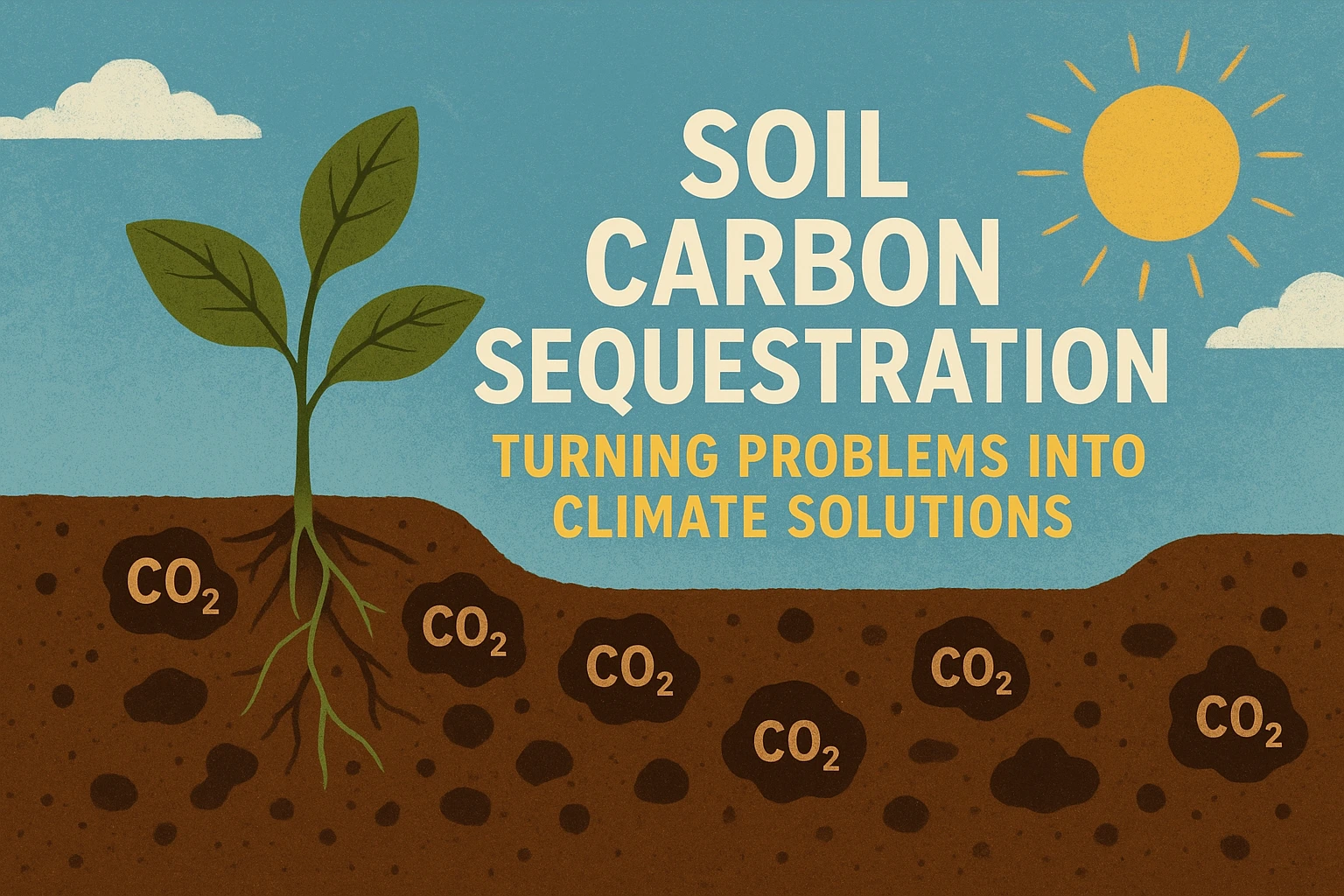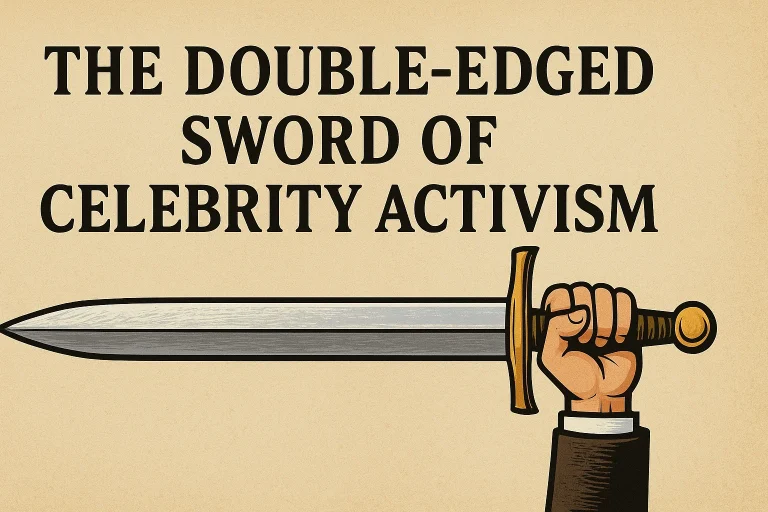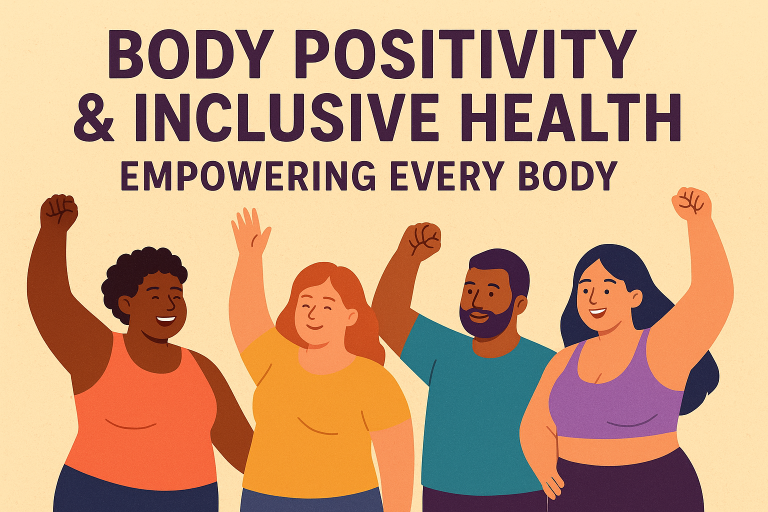
Soil Carbon Sequestration
Soil Carbon Sequestration: Turning Problems into Climate Solutions
The Hidden Power Beneath Our Feet
Soil is more than just dirt; it is a living, breathing carbon vault. It has more carbon than all the plants and the air on Earth put together. Every time roots, microbes, and minerals interact with each other, they change the global carbon balance. Through sequestration, soil quietly fights the growing threat of climate change. Soil carbon sequestration captures and stores carbon in the soil, improving soil health and helping to combat climate change. It changes CO₂ from the air into long-lasting organic molecules underground. This natural process makes the world’s climate more resilient and helps farming continue.
But to reach its full potential, it needs to solve some big problems around the world. Damaged lands, policy gaps, and a lack of awareness all slow down progress. The ground beneath us has a lot of potential if we take good care of it. The hidden power of our planet may hold the key to its long-term health.
Understanding how soils store carbon
Soil carbon sequestration is the process by which soils take in and hold onto carbon from the air.
Plants take CO₂ underground through their roots and leftover parts. Microbes break down organic matter, and some of the carbon gets stuck in stable soil molecules. In the best possible conditions, this carbon can last for hundreds or even thousands of years. Soils hold carbon in a way that is similar to how natural sponges do it because of how complex their biology is. But bad land management could reverse this process and free up stored carbon. Tillage, erosion, and overgrazing make it harder for the soil to hold carbon well. For effective sequestration, there needs to be a balance between carbon input, decomposition, and long-term soil stability.
Its Importance in the Climate Crisis
Climate change happens faster when more carbon is in the air. Soil is a cheap and natural way to store and absorb carbon efficiently. When the amount of organic matter in the soil goes up by 1%, it stores tons of carbon per hectare. In addition to storage, it helps keep water, increase fertility, and increase biodiversity. Healthy soil makes both farming more productive and the climate more stable. These two benefits make it very important for sustainable development. When soil health is restored, food security and ecological balance are assured. It gives small farmers and countries the chance to make their economies more stable. In the end, healthy soils protect lives, livelihoods, and the future of the planet.
The Science Behind Storing Carbon in Soils
Some of the carbon that is stored in soil is not permanent or the same. There are two main kinds of carbon pools: stable and unstable. Labile carbon breaks down quickly and goes back into the air. Stable carbon makes complex molecules that last for hundreds of years or bonds with minerals. These changes are caused by the variety of plants, the texture of the soil, and the activity of microbes. Scientists are studying “microbial necromass” right now because it is a big source of carbon over time. The carbon compounds that last a long time are what dead microorganisms leave behind.
Farming practices that help to store carbon
Farmers play a big part in this global solution to carbon. Some methods of regeneration make it much easier for the soil to store carbon. No-till farming keeps the soil’s organic layers intact and minimizes disturbance. Cover crops add biomass to the soil and feed the microbes that live there. Crop rotation adds a variety of organic matter to the soil and messes up the life cycles of insects. Agroforestry adds trees to ecosystems, which makes them more resilient and adds carbon. Biochar and compost help organic carbon molecules stay stable for longer. These methods work together to make an agricultural system that doesn’t release any carbon.
New technologies in carbon farming
New technology is changing how we keep an eye on and manage soil carbon. Remote sensing techniques can use satellite images to measure the amount of carbon in an area. AI-driven models can predict how much carbon can be stored using different farming methods. Blockchain and the Internet of Things (IoT) make sure that the process of checking carbon credits is open and honest. Digital soil mapping helps people use regenerative techniques that work best in their area. With carbon farming apps, farmers can now keep an eye on sequestration gains in real time. These changes make it easier for local projects to connect to global carbon markets. But technology alone cannot replace ecological awareness and care.
The economic potential of soils rich in carbon
Soil carbon is a very important type of natural wealth. Farmers are now paid by voluntary carbon markets for proven improvements in carbon storage. Each acre of healthy soil can make important annual carbon credits. Businesses buy these credits to help them reach their goal of having no net emissions. Also, soils that are high in carbon increase overall yields and lower the cost of inputs. They recycle nutrients naturally, which means you don’t have to use as many chemical fertilizers. This makes both the environment and the economy more resilient. Farmers protect the environment and make money at the same time. Soil sequestration helps rural economies and keeps agricultural productivity high over the long term. It’s a way to make money and help the environment at the same time.
The Problems: Counting and Confirming
One of the biggest problems is getting accurate carbon measurements. The amount of carbon in the soil changes a lot with the seasons, the depth, and the landscape. Conventional sampling is expensive, takes a long time, and is limited in space. Remote sensing gives you scale, but it doesn’t give you very accurate information in deeper layers. Models need to be calibrated with real data to avoid making wrong guesses. Policies and market trust lose credibility when measurement standards are not consistent. Carbon farming is still questionable from both a scientific and economic point of view because there isn’t enough evidence. Standardized global frameworks are urgently required for precise quantification.
Biological and Environmental Limits
Nature limits how much carbon soil can hold. Sandy soils have a low capacity because they can’t hold on to organic matter. In tropical areas, high temperatures speed up the breakdown of organic matter. Methane from wet soils may cancel out some of the good things about the weather. Droughts make plants add less carbon to the soil. Soil microbiomes may reach a “carbon saturation” point, at which point storage levels off. Moreover, tillage or erosion can quickly erase years of carbon benefits. Knowing these limits makes sure that climate plans are realistic and not based on wishful thinking.
Problems with policy and the economy
Policy restrictions make it hard for people to use sequestration techniques widely. A lot of farmers don’t know about or have no reason to stop doing things the old way. Immediate economic pressures take precedence over long-term environmental concerns. People don’t want to invest in regenerative management when they don’t have secure land tenure. Limited access to money and technology makes the problem worse in developing countries. Smallholders often miss out on global carbon markets because the certification process is so complicated. Inconsistent national policy also leads to fragmented and ineffective execution. Holistic frameworks must include community empowerment, economics, and science.
New Research and Future Opportunities
Scientists are looking into new ways to make soil hold more carbon. The goal of synthetic biology is to make microorganisms that make carbon stabilization work better. To move carbon deeper into the ground, scientists are breeding “deep-rooted crops.” Nanotechnology could one day make mineral-like shells that protect carbon. Using CRISPR techniques, you can change plants so that their roots make more biomass. Biochar research is now looking into how to optimize for maximum persistence in different climates. Digital twin models are used to model the ecosystems of entire farms so that carbon emissions can be reduced. New companies that want to make measurement solutions that can grow use robotics, AI, and remote sensing. These findings could change how we think about soil as a moving source of carbon.
A Useful but Hopeful Path Forward
There are definitely problems, but there is also hope. To make soil carbon sequestration work on a larger scale, science, policy, and the community need to work together. Farmers need to be able to act as carbon stewards through programs that help them learn and build their skills. Incentive-based programs can reward land practices that are good for the environment at any scale. As part of their ESG pledges, companies can help pay for soil rehabilitation. Transparent verification will help people around the world trust carbon credit systems. Putting money into soil is a way to protect the climate, food, and water in the future. Any farm, no matter how big or small, can help keep the world in balance. The potential is huge, but the path is hard to follow. Taking care of the land below will help us fix the air above.
To sum up: The Soil Revolution We Need
Soil carbon sequestration links ecology, the economy, and climate justice in one idea. It makes every scoop of soil a powerful tool for fixing climate change. There are a lot of real-world and scientific problems that will get in the way. But with creativity, teamwork, and determination, potential can become permanent. We need to think of agriculture as fixing things instead of taking things out. Farmers, scientists, and policymakers all need to work together to make climate plans that are based on the soil. This is about more than just carbon; it’s also about being responsible and starting over. The future of all living things will be good if the earth is healthy. There are real problems, but there is also a promise that will last and change everything. The most effective solution for climate change that humans have not yet learned how to use is right below our feet.

I’m a passionate blogger and senior website developer with an MPhil in Computer Science, blending technical expertise with a deep appreciation for the art of storytelling. With advanced knowledge of English literature, I craft content that bridges creativity and technology, offering readers valuable insights and engaging narratives. Whether building dynamic websites or exploring thought-provoking ideas through my blog, I’m driven by a commitment to innovation, clarity, and impactful communication.










